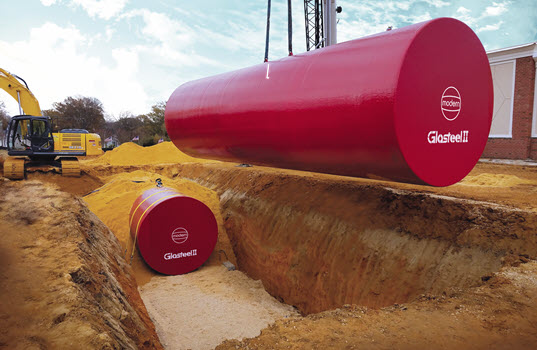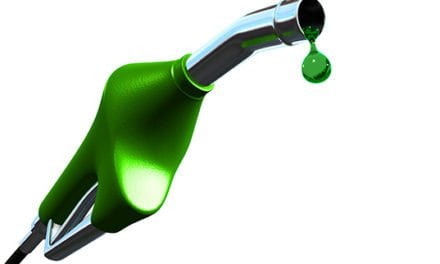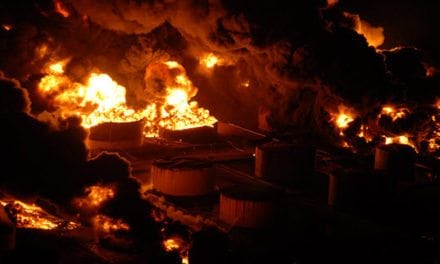“Fueled for Thought,” By Joe O’Brien, Source North America
As underground storage tanks (USTs) installed at many fueling sites are nearing the end of their warrantied service life, site operators are initiating steps to upgrade their USTs. But tank replacement represents a sizable investment – in equipment, construction costs and downtime. Here are several considerations that fuel site operators should make in conjunction with UST upgrades before, during and after installation to help prevent unwelcome surprises.
PRIOR TO PURCHASE
Doing a little legwork before purchasing new tanks is a time investment that is likely to pay off down the road. Conduct the following preliminary research to attain the lowest cost-of-ownership over the life of the equipment.
Revisit UST regulations. Before exploring the UST options that are available, review your state’s UST regulations and any pending revisions that may be in the rule-making process. (Pending revisions are usually posted on each state’s UST program webpage. Visit www.sourcena.com/state-by-state-guide/ for links to those webpages.) Identify regulations that dictate specific equipment requirements or contribute to reoccurring labor and maintenance costs. Discuss these issues with a trusted equipment supplier, who will be able to present product solutions that address them.
Become familiar with the unique benefits of fiberglass and steel. Becoming acquainted with the benefits of steel and fiberglass tanks is one of the first steps to selecting a storage solution that is ideally suited for your site’s unique needs. For example, the shape of the tank, which is ultimately determined by the material it is made of, will affect how large the tank field needs to be. Flat-end steel tanks require less space than fiberglass tanks, which have domed ends. Fiberglass tanks are known for resisting corrosion in all types of climates, but steel tanks are stronger than fiberglass tanks. Choosing the right tank for your site will help prevent premature tanks failures and complications later on.
Take note of advancements that may help future-proof your UST system. In this age of biofuels and ultra low-sulfur diesel, investing in components that curb water intrusion will reduce water-related maintenance and contamination issues down the road. Equipment manufacturers are redesigning manholes, spill containers, tank sumps and fittings to eliminate leak points. Asking a trusted equipment supplier to explain what prevention solutions might be right for a given fuel site will help eliminate the early replacement of damaged or failing UST components.
Identify potential expenses beyond the UST purchase price. There are many purchases beyond the UST itself required for a UST installation that will impact your total investment. For instance, multicompartment tanks provide storage for multiple products, but insurance is required to cover only a single tank (instead of insurance for multiple tanks that would be installed with the purpose of storing different products).
Collaborate with a reputable fueling equipment supplier to develop an itemized list of potential costs for different types of USTs. This will create a clearer picture of the value the tank will bring over its entire lifetime. Ask about:
- Prices for USTs and related equipment (such as anchoring systems and cathodic protection)
- Costs for backfill for different types of tanks (different kinds of tanks require different kinds of backfill)
- Equipment failure rates
- Known maintenance issues
- Potential insurance costs/savings
DURING INSTALLATION
UST installation is a big job, literally and figuratively. Fuel marketers have a direct role in a successful installation. The U.S. Environmental Protection Agency urges fuel site operators to “make sure that installers carefully follow the correct installation procedures called for by manufacturers’ instructions and industry codes.” Fuel site personnel should engage with contractors regularly during tank installations to maintain oversight of the process, ensure safe practices are being followed, and to document important details about the installation.
Here are just a few things to be diligent about:
Inspect and test tanks when they are shipped from the supplier. Examine the tanks when they arrive and take photos to document their condition. To ensure the warranty is not voided, complete testing procedures and immediately report any problems or defects to the supplier and/or manufacturer.
Follow proper procedures for ballasting tanks. Do not ballast tanks with fuel. Ballast with water. Once fuel is pumped into a tank the tank is subject to UST regulations and it needs to be covered by insurance. Also, do not use a high-pressure hose of any kind to ballast a tank — doing so may damage the tank and void the warranty.
Hold contractors accountable for the excavation site. Confirm they have dug the right size hole. If the excavation site is too shallow, the new tanks may not be adequately protected from the weight of traffic driving over the tanks. Or, if the hole contains unnecessary slope, more back-fill will be required to fill the void, which will increase expenses.
Create a “UST Birth Certificate.” Prior to the excavation site being back-filled, create a “UST birth certificate.” Why create a UST birth certificate before installation is completed?
- To document the UST’s serial number, dimensions, burial depth, anchoring system and other critical information BEFORE the UST is buried underground and accessibility becomes much more challenging (and expensive).
- To create a valuable reference point for the future. Refer to the birth certificate for maintenance, upgrades, insurance inquiries and more.
- Diligent documentation of UST details will signal to future property owners that meticulous record-keeping is a high priority for the fuel site, and it will be considered an asset for the new owners moving forward.
A free UST Birth Certificate form to guide operators through the documentation process can be downloaded at www.sourcena.com/ust-birth-certificate/.
Verify the contractor is using the appropriate type of material to backfill the tank. Proper backfill, as specified by the tank manufacturer, is critical to long-term performance of USTs. This detail of UST installation could easily be overlooked by a distracted (or dishonest) contractor. Observe installers as they pack the backfill around the tank to ensure no voids are created.
AFTER INSTALLATION
Following through with strong maintenance, testing and inspection practices is integral to effective UST compliance management. Other important follow-throughs include:
Make sure the certification and financial responsibility requirements are finalized. Complete the EPA’s Notification for Underground Storage Tanks form and submit it to the designated local or state agency. As of September 2019, forms are required to be submitted within 30 days of bringing the UST into use.
Collect and file records that demonstrate fuel compatibility. Fuel site operators need to show that UST components are approved by either the manufacturer or by a nationally-recognized independent testing laboratory for use with the fuel being stored in the tank. More information about compatibility is available in the EPA’s June 2019 Compliance Advisory titled Underground Storage Tank Regulation.
Keep UST birth certificates updated. Keep information contained in this document current as maintenance and upgrades dictate changes to the equipment.
Establish a savings plan for the next UST installation. As expensive as the current round of UST installations may seem, the next round will almost certainly be more costly. Set up a long-term savings plan to finance future replacements.
 Joe O’Brien is Vice President of Marketing at Source™ North America Corporation. He has more than 20 years of experience in the petroleum equipment fuel industry. Contact him at [email protected] or visit sourcena.com to learn more.
Joe O’Brien is Vice President of Marketing at Source™ North America Corporation. He has more than 20 years of experience in the petroleum equipment fuel industry. Contact him at [email protected] or visit sourcena.com to learn more.









